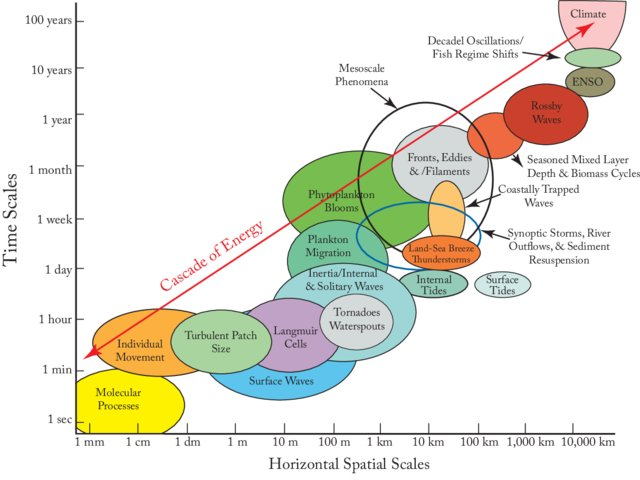Replies: 8 comments
-
|
What a Digital Twin implies for Climate Science on the GeoEnergyMath blog OTOH, this is overblown: https://spectrum.ieee.org/climate-models
|
Beta Was this translation helpful? Give feedback.
-
|
https://twitter.com/WHUT/status/1658442956276203521
|
Beta Was this translation helpful? Give feedback.
-
Pitfalls of over-fittingI used the Code Interpreter feature of ChatGPT 4 to show the pitfalls of over-fitting of time-series. This is the prompt link: The resultant code and data is in a Gist: The resultant over-fit curve: This is using 20 sinusoidal factors achieving a CC=0.63 over the training interval. In contrast, here are some examples using the LTE model, all using almost identical tidal forcing NINO4
AMO
PDO
Darwin
IOD East
IOD West
(The high CC of IOD West is not fair because of the large trend in the data.) Conclusion: Use a real physics-based model to eliminate over-fitting QBO 30 hPano dLOD calibration, only Draconic
|
Beta Was this translation helpful? Give feedback.
-
QBO30 fresh data for cross-validationCC 0.8854943177 0.3975755357 6 1 |
Beta Was this translation helpful? Give feedback.
-
All climate indices
Amazing how well the PNA, AO, and SAM fit CC validation 0.3093881917 training 0.8749318379 CC validation 0.3254148486 training 0.8510794845 CC validation 0.1987103419 training 0.8496322243 NAO very noisy |
Beta Was this translation helpful? Give feedback.
-
|
An excellent cross-validation model fit for AMO, starting from scratch with a dLOD calibration Status: 5 2 0.87014 0.38452 # 7500 CC 0.3844497156 0.8701467044 5 1 There is a strong aliased monthly component, and also a strong aliased daily (harmonic 32) |
Beta Was this translation helpful? Give feedback.
-
|
On RealClimate.org Ray says:
That's why the machine learning community spends so much time on cross-validation of results. I would go as far to say predictive numerical machine learning would be useless without cross-validation, as it is often ridiculously easy to fit a set of data with a neural net model.
That's a great example of how correlation an go wrong -- say looking for a single value of some (fine structure) constant and depending on so many other degrees of freedom to line up. Count me out. The beauty of climate science is that there are an abundance of rich time-series to draw from, composed of these seemingly erratic cycles that are counter to human intuition but that likely machine learning will be able to decode. Consider that all of fluid dynamics is characterized as a non-linear response, yet humans have spent careers doing linear analysis (trying to find their lost keys under the streetlight). Further, consider that if linear solutions compose some fraction of known problems then non-linear problems will comprise infinitely mode. Machine learning, like the neurons in the human mind (check latest paper in PRL), are non-linear generators par excellence. So, if a solution is found, it will likely come from this approach, with a heap of cross-validation applied. BTW, I would also like to quote Armando, who supplied an appropriate parable below.
Consider the rationale for why scientists follow the research paths that they do -- because that's where the money is. So what if they aren't making progress, at least there's a potential for income. OTOH, machine learning is cheap so financial incentives don't play. |
Beta Was this translation helpful? Give feedback.
-
|
From the Chaos/NonChaos arena, still no consensus on ENSO behavior "Is ENSO a damped or a self-sustained oscillation?" https://arxiv.org/pdf/2504.05513
This explanation is contradicted by the following: (1) The autocorrelation in the ENSO signal shows a very strong annual periodicity and (2) the ENSO frequency spectrum is folded about 0.5/year, indicating that the annual cycle is driving ENSO, and thus producing sidebands. This occurs even after the annual cyclic signal is filtered out. This definitely rules out a self-sustained oscillation, and any damped response is a characteristic of the forcing response. https://geoenergymath.com/2019/02/16/autocorrelation-of-enso-power-spectrum/ Not the strong annual periodicity in autocorrelation — This suggests that the ENSO system has a tight coupling with the seasonal cycle, not just as a boundary condition but as a core driver of variability. Note the spectral folding around 0.5 cycles/year (i.e., the annual cycle) — This is a hallmark of nonlinear interaction with a periodic driver, leading to sidebands (e.g., sum (+) and difference (-) frequencies about the carrier frequency). Even when the annual component is removed, the fingerprint of its influence remains, which implies structural dependence on the annual forcing. See Double-Sideband Suppressed-Carrier Modulation https://geoenergymath.com/2020/05/17/double-sideband-suppressed-carrier-modulation-vs-triad/ The interpretation is that these features strongly support a forced-damped view of ENSO, where the observed variability (including irregularity and multi-year cycles) is primarily the response of a damped oscillator driven by seasonal forcing, not an internally sustained oscillation. My model of course is of a tidal forcing origin, as with the QBO where the tidal factor is very clear. Model fitting and especially nonlinear model fitting is ambiguous (https://geoenergymath.com/2021/12/15/the-harmonics-generator-of-the-ocean/) and tends to bias toward damped interpretations (there is always friction) , but observational features, especially those tied to the annual cycle, clearly indicate ENSO is a forced, damped oscillator. The "self-sustained" hypothesis may remain theoretically possible for certain models -- if the resonant frequency fortuitously was also annual, for example -- but is empirically ruled out by signal characteristics like spectral folding and persistent seasonal coherence a la autocorrelation. |
Beta Was this translation helpful? Give feedback.




















Uh oh!
There was an error while loading. Please reload this page.
Uh oh!
There was an error while loading. Please reload this page.
-
Earth science behaviors that are potentially not chaotic ...$x \neq \text{chaotic}$

from https://agupubs.onlinelibrary.wiley.com/doi/full/10.1029/2020CN000129
New Discoveries Enabled by the Emergence of High-Resolution, Long-Term Interdisciplinary Ocean Observations
Tommy Dickey
Beta Was this translation helpful? Give feedback.
All reactions